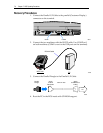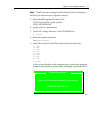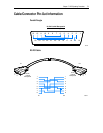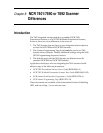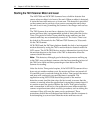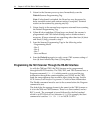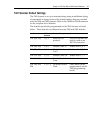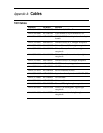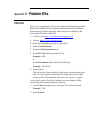
8-2 Chapter 8: NCR 7401/7890 or 7892 Scanner Differences
Starting the 7401 Scanner Motor and Laser
The NCR 7890 and NCR 7892 Scanners have a built-in detector that
senses when an object is in front of the unit. When an object is detected,
it turns the laser and motor on so it can scan. This detector is provided
so the scanner can be put into a low-power-consumption state when
the unit is not in use, permitting the scanner to last longer and use less
power.
The 7401 Scanner does not have a detector, but it does turn off the
motor and laser after a programmable period of time called the Active
Time. This period of time is from when the motor and laser are first
started until they are automatically turned off. The Active Time is set
by default to 20 seconds for the 7890 and 7892 Scanner; to 30 seconds
for the 7401 Scanner.
NCR OPOS and the FitClient platform handle the lack of an integrated
motion detector by using the 7401's motion detector located under the
LCD screen. The NCR OPOS driver receives information (events) from
the motion detector on the front of the 7401 to determine when the
scanner should be started.
Note: This detector, although good at detecting someone walking up
to the 7401, may not detect someone who has been standing in front of
the 7401 for a while and then presenting an item below the 7401
Scanner for reading.
After the Active Time period expires, if the NCR OPOS scanner driver
does not get another motion event, the motor and laser are turned off.
If a motion event is received during the Active Time period, the motor
and laser will continue to run and the timer is restarted. The
application using NCR OPOS should keep track of the motion
detection events (and the time since the last event) to ensure that the
scanner is running when the application is requesting scanner input. If
no motion events are received before the Active Time period expires,
and a transaction is still active, the application must either restart the
scanner or perform some other recovery procedure, such as asking the
customer if they still want the same service performed. These
procedures should be well designed and tested so that the customer is
not attempting to scan an item when the motor and laser are off.





